With the changing narrative on the international trade scene over recent years – including China’s bans (now lifted) and the new U.S. Tariffs – there has been increased attention from Australian businesses on the IndoChina region. This month there have been several high-level trade meetings by regional leaders there with Western diplomats.
While Australia is close to the area geographically, there are notable differences in culture, language and trade practices that can be traps for Australian importers – unless they have the right freight and logistics agent representing them.
Australia’s two-way trade with ASEAN, which includes the Mekong region, reached $192.9 billion in FY2023-24. This figure was greater than its trade with Japan, the United States, or the EU.
The Mekong Region is made up of Vietnam, Cambodia, Myanmar and Thailand. All these countries are members of the Regional Comprehensive Economic Partnership Agreement (RCEP) as well as the ASEAN-Australia-New Zealand Free Trade Agreement (AANZFTA), which play a role in facilitating trade and economic cooperation.
Importing from countries in the Mekong River Basin subregion can involve a variety of goods and services. Key areas of trade include intermediate products like machinery, chemicals, and raw materials.
There is a significant volume of trade among Southeast Asian and Pacific countries themselves. China is a popular import destination for wood products, including rosewood, from the Lower Mekong region. For this reason, there is increasing focus on ensuring the sustainability of timber and other resources exported from the Mekong.
These countries are important to Australia, and our government is working with the Mekong subregion to tackle shared development challenges and ensure a peaceful, stable and prosperous region.
Australia provides Aid for Trade programs to help countries in the Mekong region participate in regional and global trade. The $232 million first phase of the Mekong-Australia Partnership (MAP) was launched in November 2020 to bolster the subregion’s resilience and support inclusive, sustainable growth.
At the ASEAN-Australia Special Summit in March 2024, the Minister for Foreign Affairs announced a $222.5 million second phase of MAP to support the resilience and prosperity of the Mekong subregion of Southeast Asia.
Colless Young has strong connections with reliable agents in the Mekong region, and if you are planning to visit potential suppliers for the first time, talk to us before you go. Whether you are importing by FCL, LCL or airfreight from Thailand, Vietnam, Cambodia or Myanmar, let us know when you are ready to order, and we’ll guide you through the process.
If you are considering importing from anywhere in IndoChina – and specifically in the Mekong subregion – contact us here at Colless Young. Talk to Andrew, Tel: +61 7 3890 0800 email enq@collessyoung.com.au.

